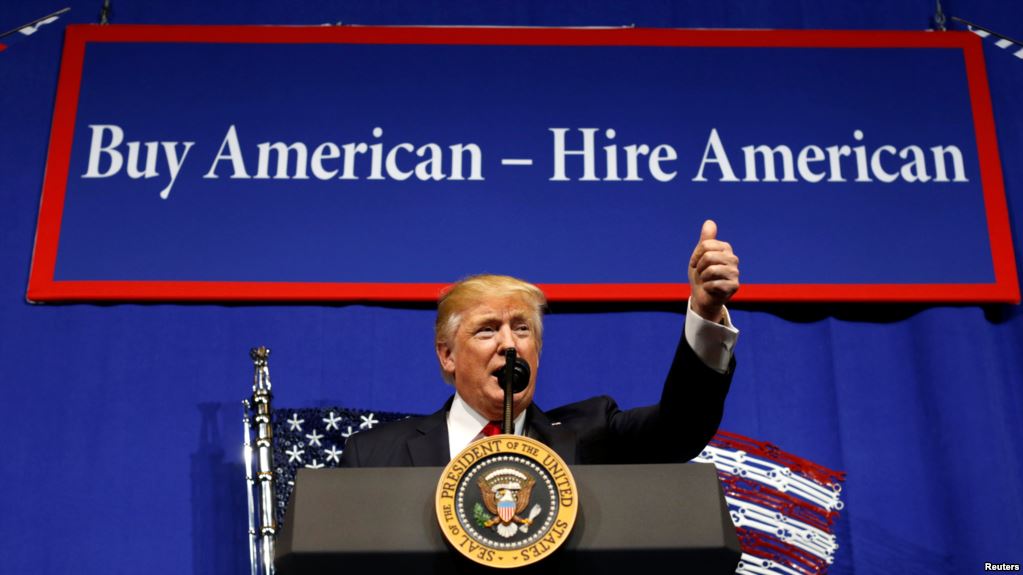Immigration Hurdles to America: H4 Visa Crisis

T
o outsiders, living in India has a particular kind of glamour attached to it, a special sparkle that sees people crowding around me at parties. “You live in India? My God, really? I could never do that. What’s it like?” The closest I have come to answering that question is that it is like being in a very intense, extremely dysfunctional relationship. India and I fight, we scream, we argue, we don’t speak for days on end, but really, deep down, we love each other. She’s a strange beast, this India. She hugs me, so tightly sometimes that I can’t breathe, then she turns and punches me hard in the face, leaving me stunned. Then she hugs me again, and suddenly I know everything will be all right.
The comprehension above does not speak for thousands of Non-Resident Indians who will be forced to quit their jobs in America after Trump administration confirmed that it is intensifying efforts to crack down on “fraud, abuse and discrimination by employers bringing foreign visa workers to the United States”. Venkat Krishnamurthy, a software developer, has been dealing with this new situation in America lately. Venkat migrated to the United States as a student to earn a Masters degree in software engineering a few years ago. After graduating from an American university with flying colours, he was able to secure a job with an American employer in California, subsequently getting married to an IT professional and settling in the Bay Area, under H1B and H4 visa categories, respectively. After Krishnamurthy’s wife successfully received her Employment Authorization Document under the previous administration, they both invested in a bigger house and two vehicles as per requirement, unaware of the fact that the succeeding government will roll back the employment authorization and other benefits that the Obama administration once approved. The cost of living with heavy investments on vehicle and property has now come all over on Venkat as he has become the sole bread earner of the family.
“The H1B visa is for specialty occupation, in other words, it is meant for ‘highly skilled’ workers who travel to the United States to work for American employers. But just in case, such workers travel with their spouses and children, a dependant visa is required, popularly known as the H4 visa.”
 The H4 visa is tied to their respective parent H1B visas. Majority of such visas are applied every year by IT professionals in India. The maximum limit for H1B visa is 85,000 per year, including the 20,000 visas regarded as special capacity for IT professionals who have earned their Masters degrees from American universities. Once the primary applicant of H1B visa successfully completes all the necessary paperwork and official formalities, the spouse who holds a H4 visa can file a separate application for work authorization in the United States.
The H4 visa is tied to their respective parent H1B visas. Majority of such visas are applied every year by IT professionals in India. The maximum limit for H1B visa is 85,000 per year, including the 20,000 visas regarded as special capacity for IT professionals who have earned their Masters degrees from American universities. Once the primary applicant of H1B visa successfully completes all the necessary paperwork and official formalities, the spouse who holds a H4 visa can file a separate application for work authorization in the United States.
However, the recent proposed change under Trump administration for H4 visa workers has caused uproar amongst the Non-Resident Indian community in the United States and waitlisted applicants in India. This is due to the large number of Indian spouses who fall under H4 visa category are highly qualified in comparison to an average American worker, resulting in hijacking jobs from American citizens. The issue concerning the H4 visa category is that after receiving the work permit, there are no limitations such as its validity, certification from the US Department of Labour as required by a Green Card holder.
“For prospective and waitlisted applicants of H1B and H4 visa categories, there arises some important questions, for instance, what is the future of the H4 visa programme? And, how long will the Trump administration continue to give H4 spouses work authorization in the United States?”
The Trump administration has made itself clear that it is going to withdraw all the rules that were introduced during President Obama’s second term relating to work authorization for spouses of H1B visa holders as it jeopardizes job prospects for American citizens. This announcement will certainly affect numerous Non-Resident Indian women in the United States. The Trump administration is also reviewing the H1B visa policies as it thinks some firms are misusing it to replace American workers; however the United States Citizenship and Immigration Services insisted that no decision on H4 visas is final as of now.
On the contrary, the stark distinction in education qualifications of dependants and low wages for foreign, especially Asian IT professionals and others has led to more hiring of Asians than Americans. Although the Trump administration and its supporters have been accusing H1B and H4 visa holders from India of stealing employment opportunities from American citizens, if such was the case, why would the previous government grant I-765 form (an employment authorization document, popularly called “EAD”), to H4 visa holders?
This new policy by the Trump administration in America has taken a toll on the Asians, particularly Indian IT professionals living in the United States with their families as it is not just difficult to lead a good life with one person’s income in most big cities with mortgages to pay, but also the educated dependent is not permitted to work only on the basis of nationality. An important question that the Trump administration has to answer by the end of all this is, whether all American nationals are going to get a permanent employment by not granting H4 visa holders work permit?
